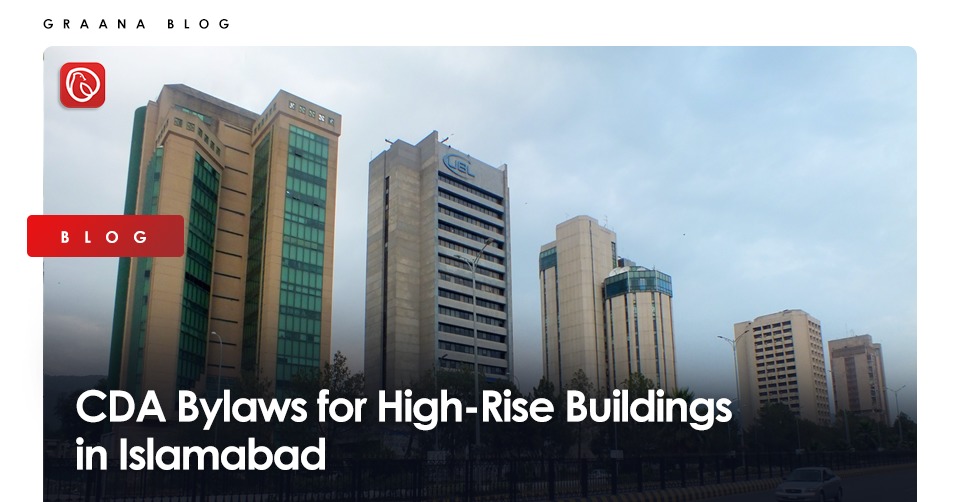One of the features for which cities are known around the world is their skyline. Some of the most iconic skylines include those of New York, Dubai, and London. The architectural critic Jonathan Glancy put it best when he wrote: ‘A city’s skyline is the city’s public face and, like the faces, people hold dear skylines and set their print in our mind’. In Pakistan, there are no such skylines primarily because of the bylaws that restrict the construction of buildings in the major cities beyond a certain height. However, the CDA bylaws have recently been revised.
The commission tasked with reviewing Islamabad’s master plan has approved the Capital Development Authority’s (CDA) new construction guidelines for high-rise buildings. The announcement followed former Prime Minister Imran Khan’s resolve to focus on the capital’s vertical expansion.
Vertical cities have numerous advantages. To begin with, you can save space and be able to accommodate more people.
Secondly, this strategy is significantly more cost-effective, as purchasing a smaller plot of land and erecting a towering structure on it can be far more inexpensive and reasonable than splurging on a vast tract of property.
The new legislation enabling high-rise buildings in Islamabad will change the city’s outlook for the better.
Former Prime Minister of Pakistan Imran Khan had approved guidelines for high-rise buildings in Islamabad, in response to the spike in population in the federal capital.
He has given the Capital Development Authority and the Civil Aviation Authority (CAA) orders to tackle the issue of building height restrictions and to approve vertical constructions. More investors are likely to flock to the city as a result of the change, which will also free up more room for green spaces.
Graana.com, Pakistan’s smartest property portal, takes a look at the by-laws for highrise buildings in Islamabad.
By-Laws for Markaz in Islamabad
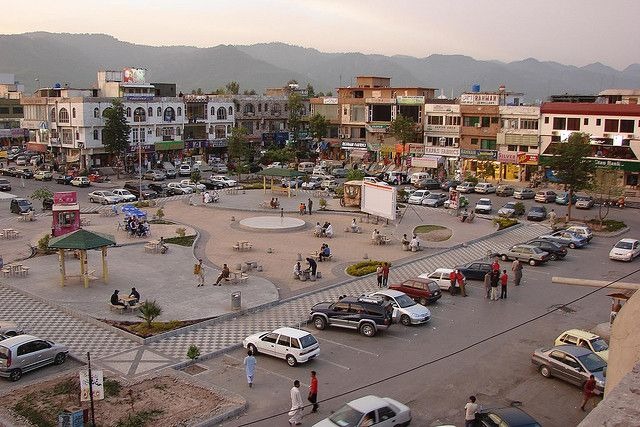
The commission also approved a set of new ordinances for Markaz regions (the hubs of several small businesses). The floor-to-area ratio, or FAR, is proportional to the size of a unit. For example, plots of 1,000 square yards or more might have a floor-to-area ratio of 1:6, up from 1:5.
Similarly, plots of up to 3,000 sq. yd. will be allowed to have a floor-area ratio of 1:8, allowing plot owners to erect large structures up to 18 stories, according to new legislation for high-rise buildings in Islamabad.
A floor-area ratio of 1:9 will be allowed for plots greater than 3,000 sq. yd. but less than 5,000 sq. yd. There will be at least 10.5 feet between the floor and the ceiling. The new laws will also oblige property owners to offer adequate parking.
Most buildings in the city had no parking places due to a low floor-to-area ratio. The increased floor-to-area ratio would allow for distinct parking spaces, avoiding issues such as double parking and roadblocks.
With no constraints on the number of storeys, even plots larger than 5000 sq. yd. can have a floor-area ratio of 1:10. For businesses, there is good news: trade centres and industrial units can now have an extra level in the basement for commercial activities, and they can have a ground-plus-one story. Those who already have highrise buildings in Blue Area can now recreate them with a 1:6 floor-area ratio.
They can also raise the number of storeys; as a result, the Blue Area may see a rise in the number of tall office buildings. Prior to the introduction of these ordinances, parking was limited to basements, but it can now be done on numerous floors.
High-Rise Buildings in Islamabad
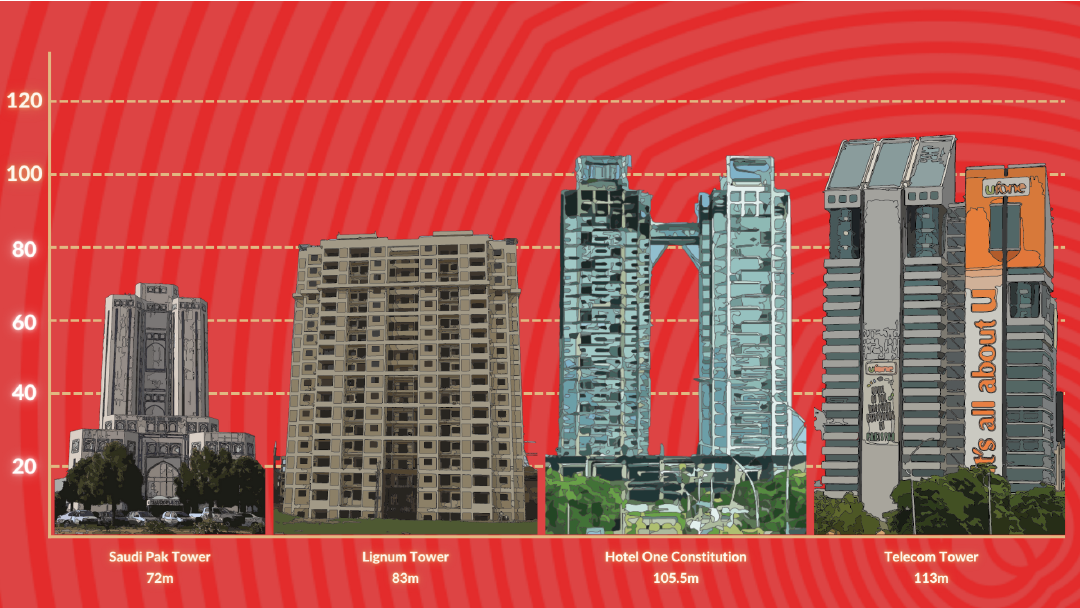
These structures can be built along roads with a 300-square-yard right-of-way (ROW) in Blue Area, sectors G-8 to G-11, and on the Kashmir Highway.
The federal panel in charge of assessing and drafting the new master plan for Islamabad 2020-2040 will develop special policies. The specifications for new structures will only be for newly erected buildings, according to CDA directives.
Third Storey: Not Legal for All
The commission has refused to allow the number of floors of Class-III shopping malls, which are essentially neighbourhood markets, to be increased. However, the buildings constructed in this class usually have a commercial basement.
The Need for Vertical Development
Vertical cities, as the name suggests, grow higher, making more room for open horizontal spaces like parks, walking paths, and, most significantly, recreational avenues.
These buildings also help to save energy and construction expenses. Furthermore, increasing the height of buildings helps to minimise the loss of natural greenbelts and reduces air pollution by allowing people to wander around their neighbourhoods without having to get in their automobiles and navigate through roadways like they would in horizontal cities.
Allowing skyscrapers to be built is the first step toward a greener, more modern Islamabad. The new policies are also likely to attract investors because high-rise construction would no longer be restricted.
Investors who want to build towers in Islamabad won’t have to wait long for their NOCs. Simultaneously, the capital will be given a modern facelift, making it even more pleasing to the eye.
CDA Bylaws Promoting Horizontal Development
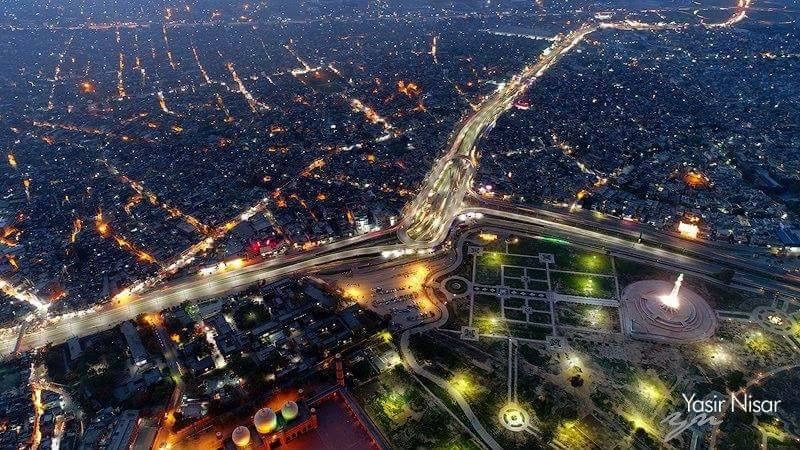
Islamabad has prioritised horizontal over vertical urbanisation since its establishment in 1960. In sector E-7, a one-kanal plot might cost up to Rs15 crore, and between Rs11-15 crore in F-6. In comparison, a one-kanal property in Karachi’s DHA Phase 8 costs Rs8-10 crore. This makes it Pakistan’s second most expensive metropolis in terms of real estate values.
The relative profusion of high-rise flats in Karachi’s poshest neighbourhoods explains why real estate in such districts costs roughly half of what real estate in Islamabad’s most upmarket area does.
This appears to be a paradigm that Islamabad has never implemented. Stranger still, the few apartment buildings that have sprung up in recent years are nevertheless branded as “luxury” residences and targeted at the upper crust.
Property prices would not have risen as much as they have if Islamabad had embraced this paradigm of inexpensive, high-rise structures and apartment living. With the exception of the wealthy, everyone in Islamabad has been priced out of the housing market.
Islamabad has become a metropolis designated for the elite. This is due to the city’s limited space, lack of forward-thinking planning, and those who wish to maintain the status quo. Islamabad might be a more affordable city today if some of the properties on Main Margalla Road had been transformed into high-rise structures.
Horizontal Expansion: A Threat to Wildlife

Islamabad’s outskirts are home to the Margalla Hills National Park. Because there is no entrance fee, its hiking paths are accessible to people of all socioeconomic backgrounds. It also supports 600 plant species, 402 bird species, 27 reptile species, and 38 animal species, including the ‘common leopard’.
Unfortunately, the city has encroached on the common leopard’s range. Resultantly the people have hunted the species to near extinction. According to the Islamabad Wildlife Management Board (IWMB), only seven common leopards have survived.
Initiatives to Protect the Wildlife
Initiatives like the ‘Asian Leopard Preservation Zone’ established in Margalla Hills National Park are critical. Especially to ensure the survival of animals on the verge of extinction and prevent them from becoming extinct.
Assume that programmes like these are abandoned. To accommodate the masses the government builds thousands of houses on every square yard of the Margalla Hills. This will obliterate all of the plant and animal species that live there. This method may appear realistic as a short-term cure.
However, what will happen in 30 years when Islamabad’s population has increased even further? When there are no parks to prey upon, how will Islamabad be expected to meet its rising housing demand? Vertical housing will allow for the flourishing of flora and fauna while also decreasing Islamabad’s excessive real estate prices.
Why Islamabad Doesn’t Have a Skyline
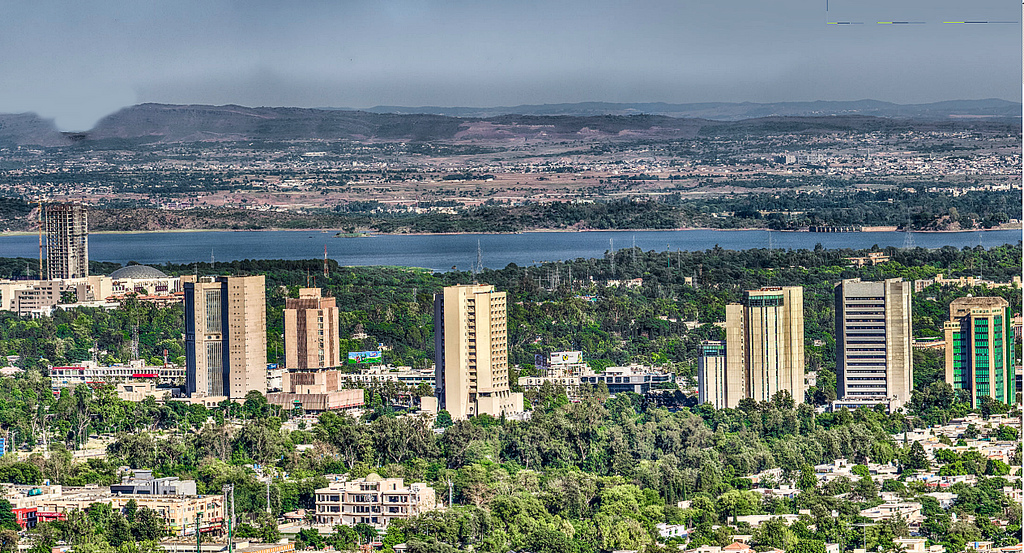
The Pakistan Institute of Development Economics (PIDE) did a “Sludge Series”. In which the institute took a detailed look at the lack of high rise buildings in Islamabad. One of the major reasons why the capital had little to no high rise buildings was the time it required a builder to get permission from the concerned government authorities.
They have noted that it requires a contractor almost 52 months to get the required permits. In addition, the permits cost a contractor some 2 million PKR.
Obtaining CDA clearance for the development of a high-rise structure takes nearly three years. The most significant source of sludge is the NOC necessary from the Civil Aviation Authority and the Environmental Protection Agency.
These two agencies take about 1.5 years (9 months each) to approve the construction of a high-rise building.
In Conclusion
As cities rethink their strategy to grow, a great deal of emphasis is placed on vertical development. Urban planners hope to tackle the problem of growing population and wildlife protection at the same time by promoting sustainable vertical growth.
The solution seems lucrative, however, the CDA bylaws in Islamabad have so far restricted the growth of the metropolis. Instead, it has promoted horizontal growth that, needless to say, has complicated the matter.
To read more about real estate laws in Islamabad, visit Graana blog.
Read more:
